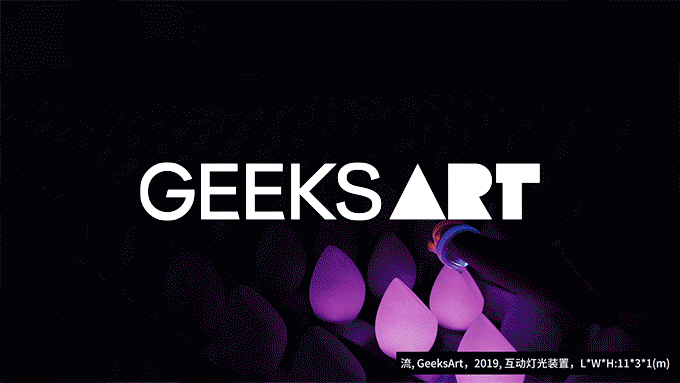*Aranya ,源自梵文:地球上一个安静的地方,一个可以找到真实自我的地方。
A store in Aranya*, a place located on the coast 300 km from Beijing.
*Aranya , derived from Sanskrit: a quiet place on earth, a place to find your true self.
场地位于一栋新建不久的外立面颇具“传统”风格的公寓底层,这里并不像常规公寓楼那样面向繁忙的街道,而是坐落于一个略有进深活跃度较低的公共广场上。
设计一个商店是一回事,但如何让人们第一眼就能记住它也是个很考验的事。由于无法改变外立面,于是“激活”广场的想法成了自然之举。这意味着我们将注意力转移到人们的旅程上,关注公众在店面之外的体验感。
This site, on the ground floor of a newly built “traditional” apartment block, is not facing the usual busy street front but is set back on a deep in-active public plaza.
Designing a store is one thing, but how to get people noticing it in the first place?
Unable to touch the facade, the idea to activate the plaza seemed a natural move. It meant shifting our Focus on the journey, the experience of the public outside the store.
 阿那亚是一个耐人寻味的地方。它被设计成一个独特的乌托邦,其精心策划的平静和克制之美有一种超现实主义感。面朝黄金海岸的沙滩,这座城市好似海市蜃楼,不知觉间从海面上浮现出来。
阿那亚是一个耐人寻味的地方。它被设计成一个独特的乌托邦,其精心策划的平静和克制之美有一种超现实主义感。面朝黄金海岸的沙滩,这座城市好似海市蜃楼,不知觉间从海面上浮现出来。
Aranya is an intriguing place. Designed as an exclusive utopia, its curated calm and controlled beauty, has a surrealistic feeling. Facing the Gold Coast beach, the city feels like a mirage, somehow emerging from the sea.
我们用诗意的构图激活广场,拥抱这个新世界,有节奏的独立体块被冲上海滩,搁浅于此。一整面的镜子墙标志着商店的位置,同时反映了虚幻的现实。广场因而成为一个公众可参与其中的演绎空间。
Embracing this new world, we activate the plaza with poetic composition, rhythmic standalone objects somehow washed up from the beach and left stranded. The mirror wall, marking the location of the store and simultaneously reflecting the reality of this illusion. Making the plaza into a space where the public can become the actors in the show.
 这面镜墙主要意在互动、标记和吸引,同时也暗示了其背后的地方,一个被现实占据的空间。
这面镜墙主要意在互动、标记和吸引,同时也暗示了其背后的地方,一个被现实占据的空间。
With its main purpose to interact, mark and attract, the wall also suggests the place behind it. A space where reality takes over.
 这个商店每年只有几个月的时间处于使用状态,当游客们纷纷涌向阿那亚完美舒适的阳光下时,则映衬了它在世界上的临时性。
这个商店每年只有几个月的时间处于使用状态,当游客们纷纷涌向阿那亚完美舒适的阳光下时,则映衬了它在世界上的临时性。
Only in use for a few months a year, when visitors flock to the comfortable sunny perfection of Aranya, this store reflects its temporary-ness in the world.

 作为剥离的空间,步入店铺后首先看到的是图书与杂志区。钢制的书刊储物架和粗犷的混凝土砖及平板桌,都将店铺模拟成一个快闪空间。
作为剥离的空间,步入店铺后首先看到的是图书与杂志区。钢制的书刊储物架和粗犷的混凝土砖及平板桌,都将店铺模拟成一个快闪空间。
Working with the stripped space, a book and magazine area is the first encounter when entering. Steel paper storage racks and imperfect concrete brick and slab tables emulate the store as a pop up.
 店铺内,品牌的标准仓库货架和重复使用的展示单元简单地通过空间组织起来。
店铺内,品牌的标准仓库货架和重复使用的展示单元简单地通过空间组织起来。
Inside The brand’s standard warehouse racks and reused display units are simply organized through the space.
 窗户则根据店铺所需的光线和视野用砖头或玻璃填补。在一些墙体开口处,则巧妙地嵌入了钢制点单口和出品区,从而与内部的柠檬茶店产生联结。
窗户则根据店铺所需的光线和视野用砖头或玻璃填补。在一些墙体开口处,则巧妙地嵌入了钢制点单口和出品区,从而与内部的柠檬茶店产生联结。
Windows have been filled with bricks or glass where light and visibility is needed. In some openings, steel order and pick up booths are subtly inserted in wall openings, thus making a connection with a lemon tea stand inside.

 在墙的后面有一处僻静地,人们可以坐下来,啜饮一口茶并思考他们真正想置身于现实的哪一面。
在墙的后面有一处僻静地,人们可以坐下来,啜饮一口茶并思考他们真正想置身于现实的哪一面。
Here quietly behind the wall, the people can sit, sip and contemplate what side of reality they actually want to play a part in.
业主:HARMAY話梅
项目地点:中国秦皇岛
建筑面积:500平方米
公共区域面积:1200平方米
建成时间:2022/07
设计范围:室内设计&外立面设计&公共空间设计
设计总监:Wendy Saunders,Vincent de Graaf
项目建筑师:郭鹏,黄骁鸣,Youjin An
室内团队:胡东凯,焦琰,松洁
陈列团队:王尤宝儿
摄影:WenStudio
Project information——
Client: HARMAY
Location: Qinhuangdao, China
GFA: 500 sqm
Public Space Area : 1200sqm
Completion: 07/2022
Design scope: Interior Design & Façade Design & Public Space Design
Design Principals: Wendy Saunders & Vincent de Graaf
Project Architect: Jerry Guo, Simon Huang, Youjin An
Interior Team: Dongkai Hu, Jiao Yan, Song Jie
VM Team: Baoer Wang
Photography: Wen Studio














